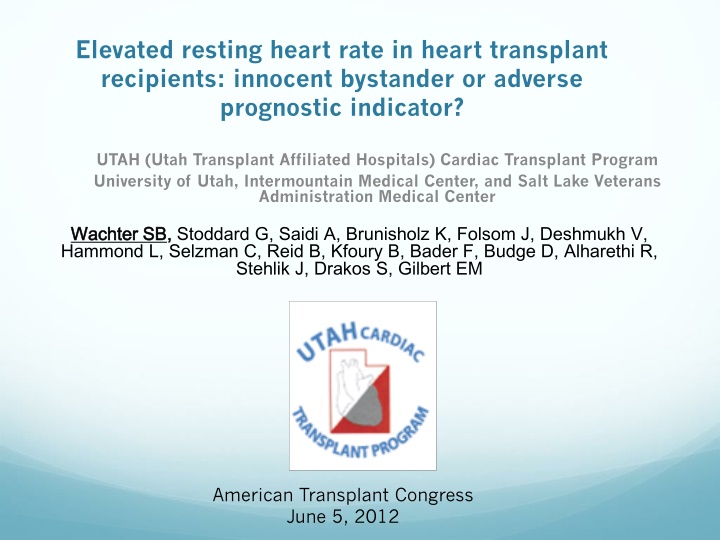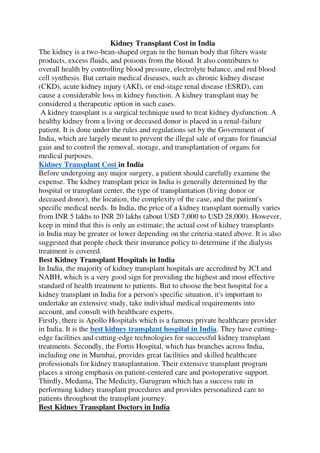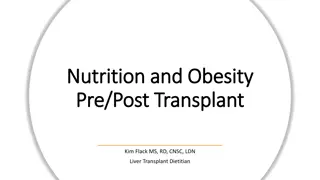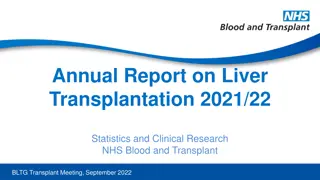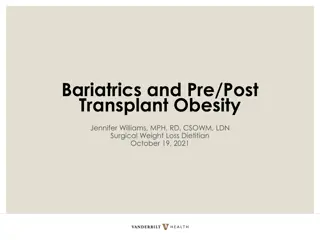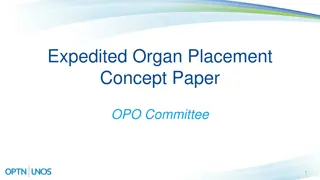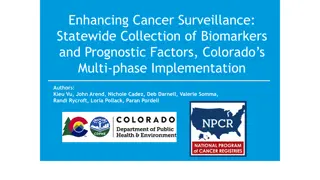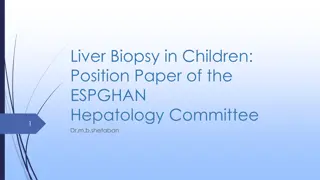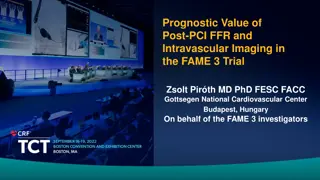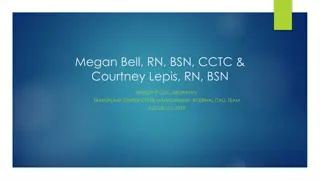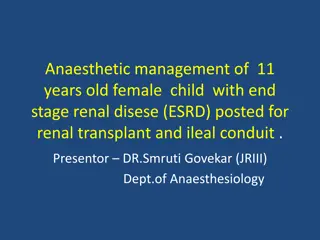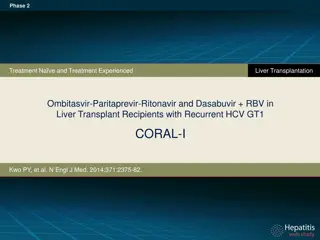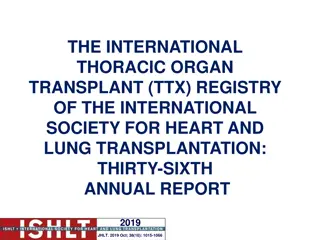Elevated Resting Heart Rate in Heart Transplant Recipients: A Prognostic Indicator?
Elevated resting heart rate is being investigated as a potential adverse prognostic indicator in heart transplant recipients. This study aims to determine if sustained tachycardia increases the risk of all-cause mortality and cardiac allograft vasculopathy in these patients through a retrospective analysis of clinical records and collected data from adult heart transplant recipients. The hypothesis is based on the known risk of elevated heart rate in the general population and a desire to understand its impact on post-transplant outcomes.
Download Presentation

Please find below an Image/Link to download the presentation.
The content on the website is provided AS IS for your information and personal use only. It may not be sold, licensed, or shared on other websites without obtaining consent from the author.If you encounter any issues during the download, it is possible that the publisher has removed the file from their server.
You are allowed to download the files provided on this website for personal or commercial use, subject to the condition that they are used lawfully. All files are the property of their respective owners.
The content on the website is provided AS IS for your information and personal use only. It may not be sold, licensed, or shared on other websites without obtaining consent from the author.
E N D
Presentation Transcript
Elevated resting heart rate in heart transplant recipients: innocent bystander or adverse prognostic indicator? UTAH (Utah Transplant Affiliated Hospitals) Cardiac Transplant Program University of Utah, Intermountain Medical Center, and Salt Lake Veterans Administration Medical Center Wachter SB Wachter SB, , Stoddard G, Saidi A, Brunisholz K, Folsom J, Deshmukh V, Hammond L, Selzman C, Reid B, Kfoury B, Bader F, Budge D, Alharethi R, Stehlik J, Drakos S, Gilbert EM heart failure logo American Transplant Congress June 5, 2012
Disclosures none heart failure logo
Background Elevated resting heart rate is known to be a risk factor of adverse cardiovascular outcomes in the general population Studies in heart transplant patients with tachycardia also show adverse cardiovascular outcomes Effects of tachycardia on mortality in a large cohort study has not previously been presented heart failure logo
Hypothesis In heart transplant patients sustained tachycardia increases the risk of: All cause mortality Cardiac allograft vasculopathy heart failure logo
Methods Retrospective study Adult patients with OHT from 2000 2011 Survived post transplant at least 3 months In-patient and out-patient clinical records University of Utah Intermountain Medical Center Salt Lake Veterans Administration Medical Center heart failure logo
Collected Data Vital signs ECGs Left heart catheterizations Cardiac biopsies Laboratory data Baseline clinical characteristics Echocardiograms heart failure logo
Defining the Study Groups Average heart rate collected by physical exam during months 3 to 12 post transplant Study groups Tachycardia group Average heart rate > 100 bpm Non Tachycardia group Average heart rate 100 bpm heart failure logo
Results heart failure logo
Heart Rate Distribution Non Tachycardia HR 100 bpm N=236 (76%) Tachycardia HR > 100 bpm N=73 (24%) heart failure logo bpm
Baseline Characteristics (pre transplant) Non Tachycardia (HR 100) N=236 Tachycardia (HR > 100) N = 73 p-value Recipient Males 80% 74% 0.27 Donor Males 71% 69% 0.77 Donor CMV 66% 65% 0.94 Recipient Age 49 14 49 12 0.98 Donor Age 24 9 33 12 < 0.001 * Recipient BMI 27 5 25 4 0.002 * DM 9% 11% 0.60 HTN 13% 25% 0.01 * CKD 3% 7% 0.08 HLD 17% 26% 0.07 Hypothyroid 3% 3% 0.93 CVA 3% 11% 0.01 * heart failure logo Smoking 44% 44% 0.99
Heart Failure Etiology Non Tachycardia (HR 100) N = 236 46% 41% 3% 2% 2% 3% 0% 1% Tachycardia (HR > 100) N= 73 41% 45% 8% 3% 0% 0% 2% 0% CAD Idiopathic CM Congenital CM Valvular CM Post partum CM Alcoholic CM Allograft vasculopathy Hypertrophic CM 41 % 46% Ischemic p = 0.58 Non 54% 59% Ischemic Hypoplastic left heart Restrictive Sarcoid Giant cell myocarditis 1% 1% 1% 1% 0% 0% 0% 0% heart failure logo heart failure logo
Clinical Changes Post Transplant (months 3-12 post transplant) Non Tachcardic (HR 100) N = 236 7% 2% 6% 0.0% 7% 3% 3% 8% 2% Tachcardic HR > 100 N = 73 4% 4% 3% 1% 3% 1% 0% 10% 4% p-value LDL > 100 TSH < 0.03 Hgb < 9 Afib by ECG Low EF < 50% Beta Blocker Ca2+ Channel Blocker ACE Inhibitor Synthroid 0.40 0.40 0.20 0.40 0.08 0.40 0.10 0.60 0.40 heart failure logo
Effect of Tachycardia on All Cause Mortality Point 0 = 3 months post transplant heart failure logo
Effect of Tachycardia on All Cause Mortality HR 100 HR > 100 HR 2.1 95% CI (1.3 3.6), p=0.004 heart failure logo
Effect of Tachycardia on Cardiovascular Mortality HR 100 HR > 100 HR 2.4 95% CI (1.0 5.7), p=0.04 heart failure logo
Effect of Tachycardia on Rejection HR 1.0 95% CI (0.7 1.4), p=0.99 HR 100 HR > 100 heart failure logo
Effect of Tachycardia on Allograft Vasculopathy HR > 100 HR 100 HR 0.8 95% CI (0.4 1.9), p=0.68 heart failure logo
Multivariable Analysis of All Cause Mortality Variable Recipient Age Recipient Gender Donor Age Donor Gender Etiology of Heart Failure CMV Recipient BMI HR (95% CI) 1.00 (0.96 1.04) 1.48 (0.50 4.35) 1.02 (0.98 1.06) 1.08 (0.41 2.82) 0.97 (0.37 2.50) 1.20 (0.49 2.94) 0.96 (0.88 1.05) p-value 0.93 0.48 0.32 0.88 0.94 0.68 0.38 Heart rate > 100 bpm 3.05 (1.17 7.94) 0.02 heart failure logo
Limitations Retrospective study design A spot measurement of heart rate does not fully reflect the circadian variability of heart rate The data suggests a significant association but does not prove causality heart failure logo
Conclusion Patients with tachycardia post transplant have an increased risk of all cause mortality Patients with tachycardia post transplant have an increased risk of cardiovascular death We did not find a difference in the rate of cardiac allograft vasculopathy or rejection between the two study groups heart failure logo
Thank you, Questions? heart failure logo
